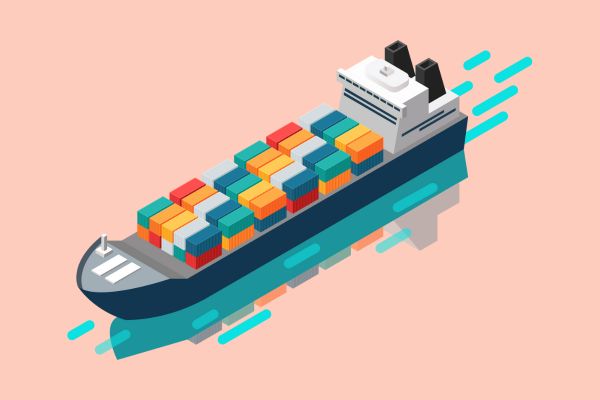What are the requirements for participants in transport of dangerous goods on inland waterways in Vietnam?
From May 15, 2024, what are the requirements for participants in transport of dangerous goods on inland waterways in Vietnam?
Pursuant to Article 13 of Decree 34/2024/ND-CP, the requirements for participants in transport of dangerous goods in Vietnam are as follows:
Requirements for participants in transport of dangerous goods in Vietnam
1. Crew members and operators of inland waterway vehicles working on vessels transporting dangerous goods must be trained and have a special professional certificate in hazardous goods transport as prescribed by the Minister of Transport; and must be trained and granted a certificate of completion of the hazardous goods safety training program in accordance with this Decree.
2. Escorts, warehousekeepers, and those loading and unloading dangerous goods on vessels and at ports and inland waterway stations must be trained and granted a certificate of completion of the hazardous goods safety training program, tailored to the hazardous goods they escort, load, unload, or store.
Meanwhile, pursuant to Article 14 of Decree 34/2024/ND-CP, the conditions for vehicles transporting dangerous goods are as follows:
Conditions for vehicles transporting dangerous goods
1. The vehicle used for transport must be legally eligible to participate in traffic as prescribed by law.
2. The vehicle must have hazardous goods symbols affixed. If there are multiple types of hazardous goods on one vehicle, symbols for all types must be affixed. The symbols should be located on both sides of the vehicle.
3. After unloading all dangerous goods, if the vehicle does not continue to transport such goods, it must be cleaned, and hazardous symbols must be removed or erased. The transportation unit, crew members, or operators of inland waterway vehicles are responsible for cleaning and removing the hazardous symbols when not continuing to transport dangerous goods.
From May 15, 2024, the conditions for vehicles and individuals involved in the transport ofdangerous goods on inland waterways include:
1. For individuals involved in the transportation of dangerous goods:
- Crew members and operators working on vessels transporting dangerous goods must be trained, possess special professional certificates in hazardous goods transport, and be granted certificates of completion of the hazardous goods safety training program.
- Escorts, warehousekeepers, and individuals loading or unloading dangerous goods must be trained and possess corresponding safety certificates for hazardous goods.
2. For vehicles transporting dangerous goods:
- The vehicle must meet legal traffic participation conditions, including having hazardous goods symbols affixed according to regulations and being cleaned along with symbol removal when not transporting dangerous goods.

From May 15, 2024, what are the requirements for participants in transport of dangerous goods on inland waterways in Vietnam? (Internet Image)
What are details of the classification of dangerous goods in Vietnam?
According to Article 4 of Decree 34/2024/ND-CP, dangerous goods are classified as follows:
Classification of dangerous goods
1. Based on chemical and physical properties, dangerous goods are classified into 9 types and sub-groups as follows:
a. Type 1: Explosives and flammable articles:
Group 1.1: Substances and items with a wide explosion risk.
Group 1.2: Substances and items with a scattering risk but not a wide explosion.
Group 1.3: Substances and items with a risk of both mild explosion/scattering and ignition.
Group 1.4: Substances and items with negligible risk.
Group 1.5: Less sensitive substances with a wide explosion risk.
Group 1.6: Extremely insensitive articles without significant explosion risk.
b. Type 2: Gases:
Group 2.1: Flammable gases.
Group 2.2: Non-flammable, non-toxic gases.
Group 2.3: Toxic gases.
c. Type 3: Flammable liquids and non-sensitive liquid explosives:
d. Type 4:
Group 4.1: Flammable solids, self-reactive substances, and desensitized solid explosives.
Group 4.2: Substances with self-ignition capability.
Group 4.3: Substances emitting flammable gases when in contact with water.
e. Type 5:
Group 5.1: Oxidizing substances.
Group 5.2: Organic peroxides.
f. Type 6:
Group 6.1: Toxic substances.
Group 6.2: Infectious substances.
g. Type 7: Radioactive materials:
h. Type 8: Corrosive substances:
i. Type 9: Miscellaneous dangerous substances and articles.
2. Packaging and containers holding dangerous goods that have not been cleaned inside and out after unloading dangerous goods are also considered corresponding dangerous goods.
Thus, dangerous goods are classified into 9 types and sub-groups as follows:- Type 1 includes explosives and flammable articles;- Type 2 includes flammable gases, non-flammable non-toxic gases, and toxic gases;- Type 3 includes flammable liquids and non-sensitive liquid explosives;- Type 4 includes flammable solids, self-reactive substances, and desensitized solid explosives, self-igniting substances, and substances emitting flammable gases upon contact with water;- Type 5 includes oxidizing substances and organic peroxides;- Type 6 includes toxic substances and infectious substances;- Type 7 includes radioactive substances;- Type 8 includes corrosive substances;- Type 9 includes miscellaneous dangerous substances and articles.
How should the loading, unloading, and storage of dangerous goods on inland waterway vehicles be managed?
Pursuant to Article 15 of Decree 34/2024/ND-CP, individuals handling the loading and unloading of dangerous goods must comply with regulations on loading goods on inland waterway vehicles and the following regulations:
1. Loading and unloading dangerous goods must be directly guided and supervised by warehousekeepers, transportation lessees, or escorts; the captain decides on the loading scheme of dangerous goods on the vessel and the appropriate padding, securing according to the nature of each type and group of dangerous goods. Loading different types of goods which may interact to increase danger in the same compartment or hold of the vehicle is prohibited.
2. If dangerous goods transport does not require an escort, the transporter must perform loading and unloading according to the instructions of the transportation lessee.
3. For types and groups of dangerous goods requiring separate handling and storage, loading/unloading must be carried out at designated piers, docks, and separate warehouses.
4. After completely removing dangerous goods from the warehouse, the storage area must be cleaned to avoid affecting other goods.
Thus, the loading and unloading of dangerous goods on vehicles and storage on inland waterways must ensure compliance with four requirements stated above.
LawNet